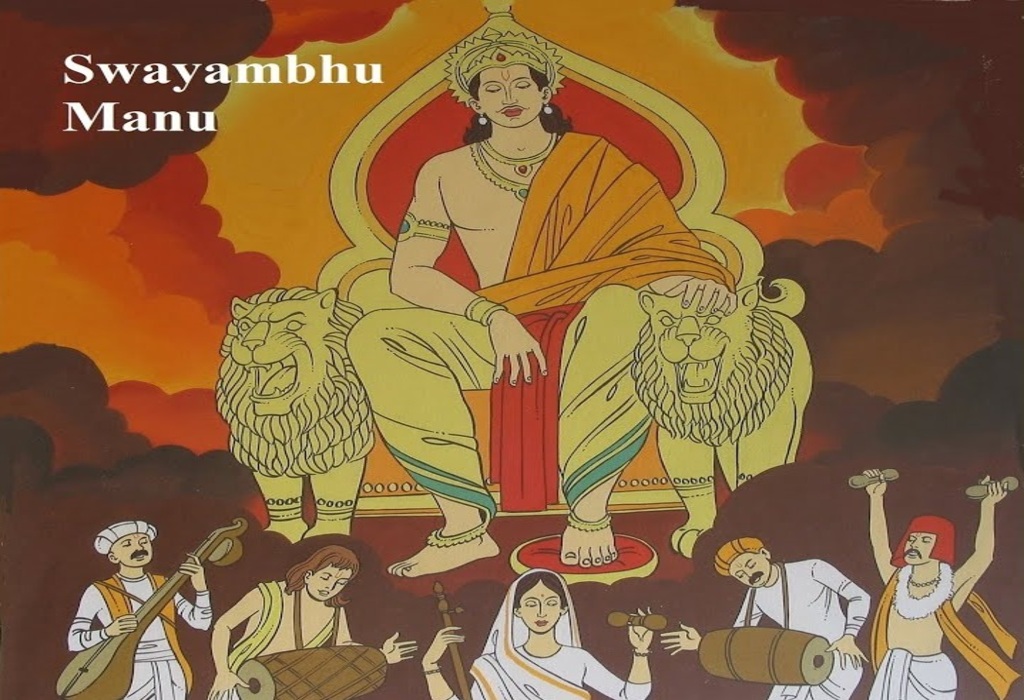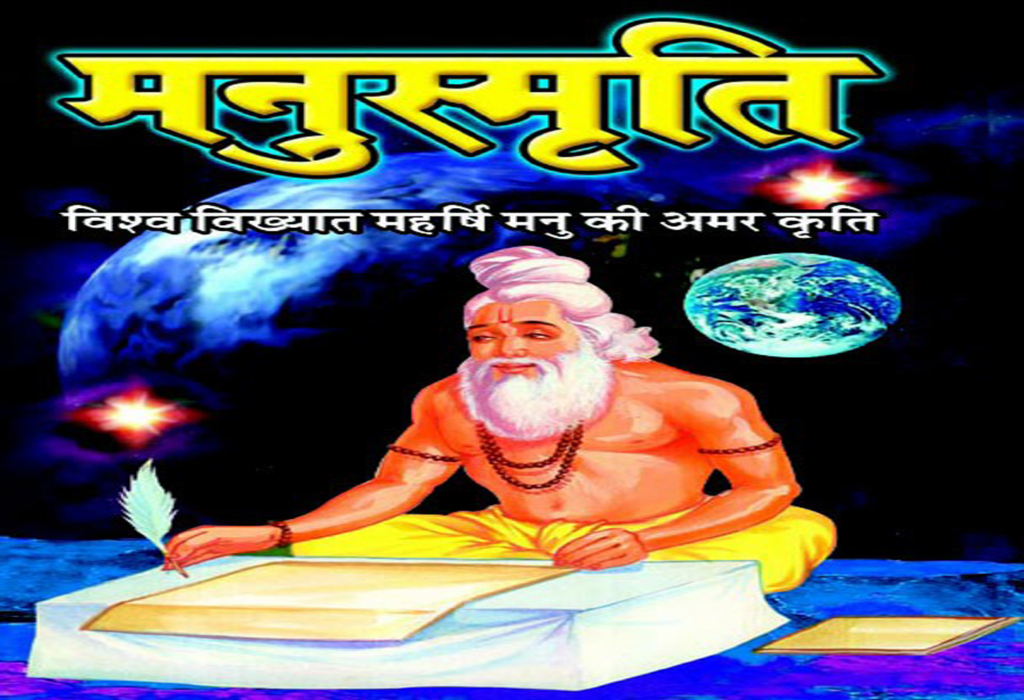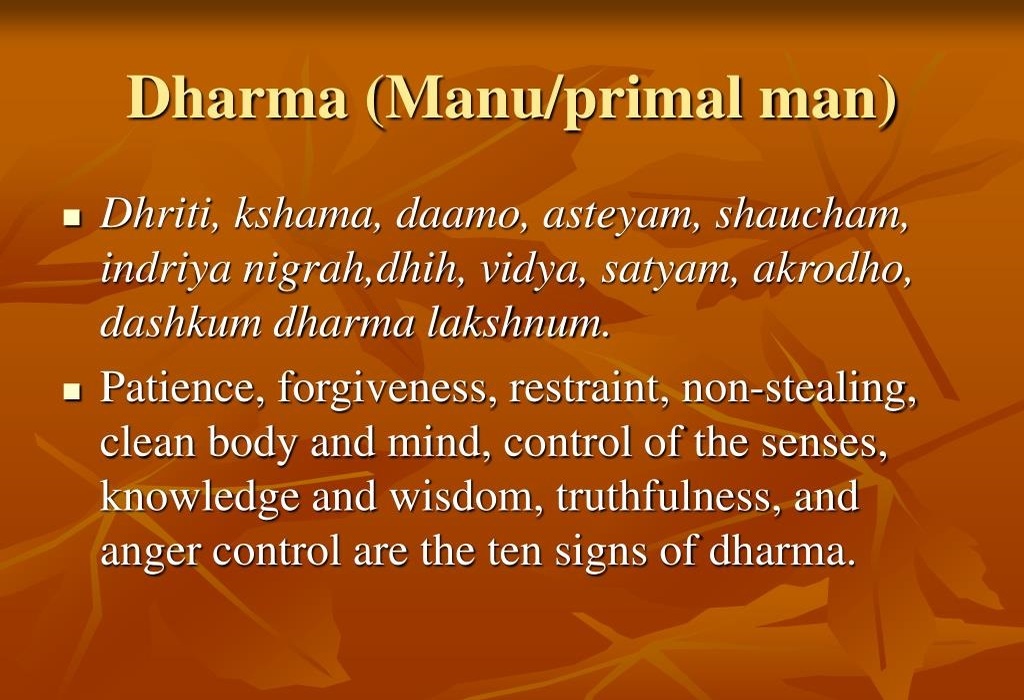Introduction

Swayambhuva Manu is said to have promulgated dharma for the first time on this Earth as per the description in the Mahabharata (Shanti Parva – 336 – 38 to 46). He is stated to have divided the Vedas into four sections. The teachings of Swayambhuva Manu took four streams, under the masters Bhrigu, Narada, Brihaspati and Angiras. All these are revered as Dharmashastra writers.
Information in Detail

According to scholars, Swayambhuva Dharmashastra is the most ancient work and the precursor of later Manusmriti. Manusmriti is also known as Manu Dharma Shastra which literally translates into The rules of Dharma as prescribed by Manu. The Manusmriti (2nd to 3rd century CE) is the most studied and earliest metrical work of the Dharmaśāstra textual tradition of Hinduism.
About Manusmriti

Manusmriti is an vedic indian text which is originally composed by the Swayambhuva Manu at the starting of the Indian Vedic Civilization to be followed by the people of the society to live in a systematic way of life which is based on law and order as per according to the norms and customs of that period of time. Manusmriti is also known as Manu Dharma Shastra which literally translates into The rules of Dharma as prescribed by Manu.
The Manusmriti proposes various laws to govern human life and its code of conduct as applicable to each human individual according to his or her social class, duties, societal status and responsibilities. Over the 100s of years this Manusmriti has served its contribution as a source of law and helped to codify the law as per the morale of the society.
Another reference to Manu are the texts by Svayambhuva Manu, which include the likes of Manava Grihyasutra, Manava Sulbasutra and Manava Dharmashastra – which is the Manusmriti, or the rules of Manu. The Manusmriti is the fount of all Hindu law – and is seen as the most important and earliest work of the Dharmashastra, and the earliest milestone in textualising Hinduism.
The text in Manusmriti deals with the following sub-topics:
- Creation of the world
- Source of dharma
- The dharma of the four social classes
- Law of karma, rebirth and final liberation
The 10 Principles of Dharma as per Manu

धॄति: क्षमा दमोऽस्तेयं शौचमिन्द्रियनिग्रह:।
धीर्विद्या सत्यमक्रोधो दशकं धर्मलक्षणम्॥
Dhṛitiḥ kṣhamā damo’steyaṁ śauchaṁ indriyanigrahaḥ
dhīrvidyā satyamakrodho daśakaṁ dharmalakṣaṇam
(Daśakaṁ Dharmalakṣaṇam – translated to The Ten characteristics of Dharma)
- Dhriti: Steadfastness
- Kshama: Forgiveness
- Dama: Self-control
- Asteya: Non-stealing
- Shaucha: Cleanliness (of mind, body and local area)
- Indriya Nigraha: Control of senses
- Dhi: Intellect
- Vidya: Knowledge
- Satya: Truthfulness
- Akrodha: Non-anger
Incorporating these principles into your life can lead to improved mental, emotional, and social well-being. They encourage an ethical approach to decision-making and interaction with others, fostering a sense of purpose and meaning in life. Practicing these principles also contributes to the creation of a more just and harmonious society by promoting values that prioritize the common good and the well-being of all and help you become a person which will be above 99% of rest primitive people.
Svayambhuva Manu and Hinduism

Svayambhuva Manu, the spiritual son of Brahma, who is considered as the architect of laws pertaining to the followers of the Sanatana Dharma (Hinduism).
Regardless of where we had our upbringing in India, as Hindus, most of us have had some reference made to Manu – whether in passing, or in the mention of the Mansmriti, or even in the value accorded to the way an aeon is calculated. In most instances, we’ve associated Manu with the figure of a man who stood for the truth and all kinds of goodness, that there was simply no refuting his goodness – even for God, so much so, that his very deluge to destroy the earth did nothing to him. However, in many Hindu traditions and beliefs, there are a plethora of referential terms to the connotation of “Manu”.
Starting at the top, the most common reference is the allusion to a man who codified the fount of all natural law, in what we know now to be the Manusmriti. A man, named Manu, was of such purity and virtuousness, that there was absolutely nothing about him that could surmount to being a flaw worthy of godly punitive action. When there was a great deluge, a flood if you will, that destroyed the Earth, he was, for all practical purposes, the last man standing. He was, therefore, the progenitor of humanity, and codified a set of ethical values and rules for mankind to follow in the years to come.
According to a story, when Manu started prayers lots of God’s came like Brahma, Vishnu, Mahesh etc. Everyone started convincing him for stopping the prayers and to take whatever he wants. Manu smiled, because he knew he had enjoyed all materials on Earth, he knows all things from the bottom, he was father of the entire human kind. So, he expressed his thought that he hasn’t willingness of any material from this materialistic world.
All returned, then lastly The Supreme Being Himself came in the face of sun, and provided the path of salvation to Manu. (As per The Bhagavad Gita, I recite this Holy knowledge to Surya, Surya told to Manu, and then rajrishis came to know this supreme knowledge, then pater it vanished from the Earth, now again I am telling you the same knowledge, dear Arjuna)
So, Manu got the supreme knowledge of The Bhagavad Gita, and The Bhagavad Gita was, is and will be applicable for all the people who are truly looking for it.
The Eternal Religion

The practice of Dharma is Karma. So, our karma should be based upon Dharma.
The most authentic Dharma Shastra text that can be used to practice Dharma today is the “Ishwari Dharma” or the “Vishwa Dharma” revealed in The Bhagavad Gita.
Lord Krishna says, “I have revealed to mankind the most secret Shastra — that is “Ishwari Dharma/Vishwa Dharma/Manava Dharma. It is beyond all scriptures (religions) of the world. He who realizes this Universal Dharma Shastra — that is Direct Vision of Truth (Divyachakshu) — reaches fulfilment.” (The Bhagavad Gita, 11.8; 15.16–20)
“Those who faithfully practice this Eternal Dharma through selfless, fearless performance of “Svakarma” for the welfare of all beings, and thus participate in My Divine Mission are exceedingly dear to Me.” (The Bhagavad Gita, 12.20)
When practiced with realization, this Eternal Dharma leads to love and immortality.
